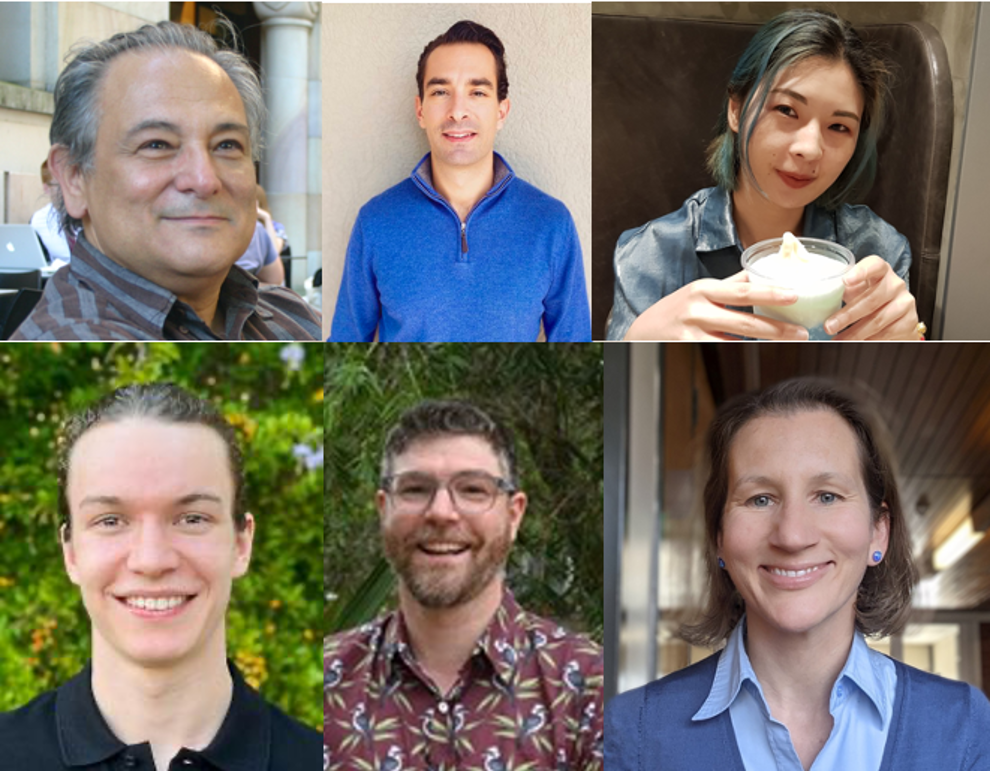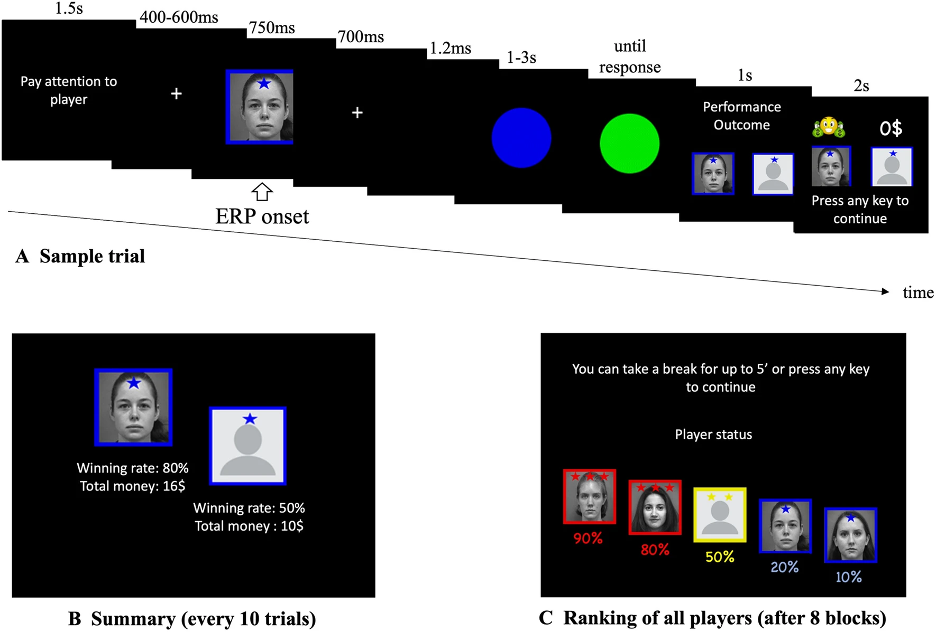You may not get a second chance to make a first impression, but how important are first impressions really? According to the authors of an article recently published in the Psychonomic Society’s journal Cognitive, Affective, & Behavioral Neuroscience,
“Human beings live in a social environment that functions through the establishment of hierarchies, with individuals acting as leaders and others as followers. Although leadership may be established through different criteria such as physical strength, wealth, or observed skills, a person must always rapidly identify those who are in a position of leadership if the social group is to function appropriately.”
In the study, researchers Alan Pegna, David Framorando, Zhou (Linda) Yu, Zak Buhmann, Nicole Nelson, and Barnaby Dixson (pictured below) investigated how social hierarchies are processed in the brain, specifically looking at brain activity when viewing dominant and non-dominant faces.

In the experiment, a group of undergraduate students played a game that involved a simple reaction time test. The game was simple: a blue circle on the screen suddenly turns green and the player has to press the spacebar as quickly as possible. If their response time was fast enough, they “won” the round and received a virtual dollar. If they were too slow, they “lost” the round and received nothing.

As they played, the participants were shown pictures of faces, which they were told were other participants who had played the game earlier. As the participants played the game, they were given feedback on their performance and shown the star rankings of these other supposed players. But really, both the feedback and the other players were fake. For each trial, the participant’s response was given a 50/50 chance of winning or losing, regardless of their actual performance. The other players, who were meant to serve as benchmarks not competition, were split into “inferior players”, winning only 10-20% of the time, and “superior players”, who won 80-90% of the time.
At first, all players were ranked as 1-star players. But halfway through the experiment, all the rankings were updated. Because of the fake feedback, the real participant was ranked as an intermediate 2-star player, while the fake players were either upgraded to 3-star players or maintained their 1-star rating. As the participants continued playing, they repeatedly saw all the players’ star ratings and the faces associated with them.
While participants were playing the game, the researchers were also recording their brain activity using EEG (electroencephalography). Specifically, the researchers wanted to see if viewing the faces of the inferior and superior players affected early or late brain activity, as well as what areas of the brain are involved in this kind of social hierarchy-related face processing. Sparse previous research has been mixed, with some studies finding effects on very early processing and other studies finding effects on late processing.
While viewing a dominant or non-dominant face before a trial didn’t affect their behavioral performance (reaction times were generally the same throughout the experiment), there was a difference in brain activity. Specifically, the researchers found that there was a dominance-related difference in activity early, around 170 ms, during the face-sensitive N170 wave, suggesting that social hierarchies do affect early stages of face processing. But they also found an effect of social hierarchy at a later stage, at 400-700 ms, during the late positive potential (LPP), which the authors posit may be related to identifying the motivational significance of what the person is viewing and enhancing their attention.
Together, these findings suggest two stages of social hierarchy-related face processing. First, there is an early rapid activation of perceptual processes and limbic areas, followed by later activity in the motivational and attentional systems. Importantly, the authors say
“This study shows that the human brain is geared to detect rapidly the social hierarchy status of individuals with whom they have interacted. This likely applies to all interactions, be they in the workspace, at school or in sports activities for example.”
As we humans navigate our complex social world, it turns out that even milliseconds matter in first impressions.
Featured Psychonomic Society article
Pegna, A.J., Framorando, D., Yu, Z. et al. (2023). Hierarchical status is rapidly assessed from behaviourally dominant faces. Cognitie Affective Behavior Neurosci 23, 1267–1280. https://doi.org/10.3758/s13415-023-01108-1
